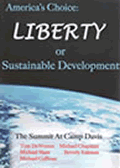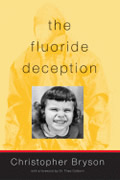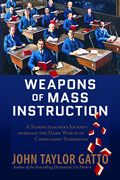"TAKING
THE RED PILL"
THE
REAL MATRIX
PART 10
By Professor
Steven Yates
June 21, 2014
NewsWithViews.com
The Money / Financialization Matrix
“Allow me to issue and control a nation's currency, and I care not who makes the laws.” ~Mayer Amschel Rothschild, circa 1791
“Private fortunes, in the present state of our circulation, are at the mercy of those self-created money lenders, and are prostrated by the floods of nominal money with which their avarice deluges us.” ~Thomas Jefferson to John W. Eppes, 1813
“I sincerely believe … that banking establishments are more dangerous than standing armies, and that the principle of spending money to be paid by posterity under the name of funding is but swindling futurity on a large scale.” ~Thomas Jefferson to John Taylor, 1816
“I, too, have been a close observer of the Bank of the United States. I have had men watching you for a long time, and am convinced that you have used the funds of the bank to speculate in the breadstuffs of this country. When you won, you divided the profits amongst you, and when you lost, you charged it to the bank. You tell me that if I take the deposits from the bank and annul its charter, I shall ruin ten thousand families. That may be true, gentlemen, but that is your sin! Should I let you go on, you will ruin fifth thousand families, and that would be my sin! You are a den of vipers and thieves. I have determined to rout you out, and by the Eternal I will rout you out!” ~Andrew Jackson to assembled Second Bank of the United States bankers, 1834
“The few who understand the system (interest-bearing money) will either be so interested in its profits, or so dependent on its favors that there will be no opposition from that class, while on the other hand, the great body of people, mentally incapable of comprehending the tremendous advantages that capital derives from the system, will bear its burdens without complaint, and perhaps without even suspecting the system is inimical to their interests.” ~Lord Nathaniel Rothschild to New York City associates, 1862
“[The Federal Reserve Act] establishes the most gigantic trust on earth.... When the President signs this bill the invisible government by the money power, proven to exist by the Money Trust investigation, will be legalized … “ ~Charles August Lindbergh Sr. before Congress, 1913
“Mr. Chairman, we have in this country one of the most corrupt institutions the world has ever known. I refer to the Federal Reserve Board and the Federal Reserve banks.... This evil institution has impoverished and ruined the people of the United States, has bankrupted itself, and has practically bankrupted our Government. Some people think the Federal Reserve banks are United States Government institutions. They are not Government institutions. They are private credit monopolies which prey upon the people of the United States for the benefit of themselves and their foreign customers; foreign and domestic speculators and swindlers; and rich and predatory money lenders.” ~Louis T. McFadden before Congress, 1932.
“The U.S. government has a technology, called a printing press (or its electronic equivalent), that allows it to produce as many dollars as it wishes at no cost.” ~Ben Bernanke, Nov. 21, 2002
“One myth that's out there is that what we're doing is printing money. We're not printing money.” ~Ben Bernanke, Dec. 5, 2010
“As long as the Matrix exists, the human race will never be free.” ~Morpheus, The Matrix
For well over a hundred years, the combination of Constitutional republican democracy and market capitalism seemed to be a rising tide lifting all boats, including those of the poor. But during the second hundred years—despite advances in technology that would have made the Founding Fathers gasp—something went badly wrong.
Today, of course, the gulf between rich and poor is widening everywhere. This has already triggered unrest in the developing world. Unrest may spread to the U.S. when the next major economic downturn hits, if it dawns on average Americans that there has been no recovery outside Wall Street. Even elites are concerned, as should be clear from the book creating the largest stir this year: Capital in the 21st Century, by Thomas Piketty. It is rare for a thick (696 pages) economic treatise by a previously mostly unknown professor to shoot to the #1 spot on Amazon.com. Piketty's quasi-Marxian analysis, as well as the support for it from within the establishment, are likely intended to ensure that as many intellectuals as possible continue ingesting the “blue pill.” As matters stand, this might not be hard, as the majority even of highly educated people with Ph.D.s have little or no grasp of how the Western world's money and banking system works. As for the general public, how are they to understand why they are working more and achieving less—if they can find jobs at all? They know that a sizable portion of their country's manufacturing base has gone overseas for cheap labor, and that the largest middle class in history is disappearing. One reason those with work are working harder is that their money has lost its purchasing power.
Money circumscribes most of our lives. Obtaining it and then obtaining more has become an end in itself for most people in advanced civilizations. Clearly, one of most important keys to “taking the red pill” is understanding the money and banking system. This isn't especially easy, given that with its charts, graphs, and language unintelligible to nonspecialists, most economics seems calculated to keep most of us in the dark.
The European bankers—as was noted in one of the original segments—had honed the art of fractional lending to where they could control governments and foment wars. “If my sons did not want wars,” stated Gutle Schnapper Rothschild, Mayer Amschel's widow, late in her life, “there would be none.” Indeed, without the process we are about to describe, there is no doubt this world would be a far more peaceful place.
Fractional reserve banking was the dominant practice in the industry even prior to the creation of the Federal Reserve System in the U.S. in 1913. Here is how it works. The federal government (e.g., politicians) decides it needs money. Its minions in the Treasury Department contact the Federal Reserve. They request—let's say—$20 billion. The Fed agrees to buy $20 billion in government bonds. The government prints treasury bonds totaling $20 billion. The Fed prepares its own pieces of paper, called Federal Reserve Notes. You probably have some in your wallet or on your dresser as you read this. It prepares $20 billion worth of these. They trade. The federal government deposits $20 billion into a bank account. It can then spend the money on various federal programs.
We speak metaphorically here. In recent decades this has been electronic. No paper is used at all. But the federal government and Federal Reserve have just increased the money supply by $20 billion.
The $20 billion is treated like any deposit. The bank must maintain a required reserve, equal (in most places) to 10% of what “exists” in banking cyberspace. In other words, of the $20 billion deposited, $2 billion is retained as the required reserve. That fact that the bank only keeps 10% of what is recorded on its books assumes that depositors won't want to withdraw all their money at once, of course. The bank won't have it, and will technically fail. The other $18 billion may not exist physically, but it can be loaned out. Does the bank loan out $18 billion from what was deposited? Actually it does not. A banker enters data into his computer, creates $18 billion on top of the $20 billion originally deposited, and loans that out! Borrowers deposit it as credit in their bank accounts. The money supply expands again—by $38 billion!
This occurred because there was a demand for loans—from borrowers none of whom understand this system—and credit available to loan out. What we didn't note above is that government bonds are instruments of debt. When the government purchases these bonds, it is taking out a loan. Loans are to be paid back. This is to say, money—created out of thin air—is created from debt. If paid back it would disappear from circulation. This is hard for most people to get their brains around. Perhaps they expect honesty from the system that creates and manages the medium of exchange in their society.
Continuing: of the newly created $18 billion, again $1.8 billion must be kept in reserve, while $16.2 is available to loan out. Again, the $16.2 billion is not taken from the $18 billion in depositors' accounts but created again by data entry: so that at the end of the next transaction cycle the money generated from that original $20 billion is now $54.2 billion. Of the newly created $16.2 billion, again the bank must keep ten percent on reserve ($1.62 billion) but can loan out an amount equal to the rest ($14.58 billion). Again the money loaned out comes not from the $16.2 billion but is created via data entry. We began with a deposit of $20 billion. We now have $68.78 billion!
This process can repeat indefinitely. The amount of created money will soon reach, and surpass, $200 billion! The basic principle—which can be had from the Federal Reserve's own publications (e.g., Modern Money Mechanics, issued by the Federal Reserve Bank of Chicago)—is that for any deposit, nine times that deposit can be created by the bank out of thin air and loaned to new borrowers.
It is important to note that new value isn't created. The amount of goods and services exchanged in the economy hasn't changed. If these increase, then increasing the money supply is reasonable. But in the circumstances we are considering here, all we know that has increased is the money supply. Fractional reserve banking doesn't void the law of supply and demand, however: as supply increases while demand stays the same, the marginal value of individual units drops. In the case of paper currency, it buys less. The newly created money “robs” existing currency of a portion of its purchasing power. The visible consequence is that prices of goods and services in the real economy rise. The common term for this is inflation. What has been inflated is the money supply. It is fortunate that most of the newly created money remains in banks as part of what is known as the M3 aggregate—all physical currency in circulation, all money in banking accounts including savings accounts, and money owed. If we were talking about currency in circulation, prices of all basic consumer goods would go into the stratosphere!
The process of expanding the money supply independently of real economic growth is inherently inflationary. It cannot have any other result. This, of course, is why my grandfather could buy two hamburgers for 25 cents each and a Coke for a nickel. The dollar has lost over 97% of its purchasing power since the Federal Reserve was created.
Much of this loss has taken place since 1971, the year President Richard Nixon “closed the gold window,” i.e., severed the ties between the dollar and gold that had been in place since the Bretton Woods system established the dollar as the world's reserve currency. Federal spending had exploded in the 1960s; the public was showing irritability over taxes; the money had to come from somewhere.
Since 1971, the money creation spigot has run full blast. That was the beginning of the shift from an economy based on production to one based on financialization. Corporations were just beginning to offshore production for cheap labor, causing the much-vaunted shift in the U.S. economy from manufacturing to low-paying services which would become noticeable in the future. The national debt was around $400 billion when Nixon entered office. It crossed the $1 trillion threshold during the early Reagan years, true to his mainstream Republicanism, held down taxes but not spending. It was $6 trillion during the Clinton years. It grew to over $11 trillion under George W. Bush and has ballooned to over $17 trillion under Barack Obama. Does it make sense to say that in the “desert of the real” this is unsustainable? That this process cannot continue indefinitely?
We noted above that when the Federal Reserve creates Federal Reserve Notes and loans them out, the federal government acquires debt. We didn't note that the debt begins to accrue interest. When a bank loans out money to an ordinary borrower, it obviously also charges interest. When the debt is paid, the bank doesn't consider its loan paid in full unless the accrued interest is also paid (and interest compounds with time).
The following point is extremely important! If all money is created out of nothing, and interest is charged on it, then the total amount owed—the total principal (that which is borrowed) by all borrowers plus the total interest owed by all borrowers—will always exceed the money supply! Only the principal was created. There is not money to pay the interest. It does not exist! It was never created and loaned out!
So where does the money to pay interest come from? Some will do well enough to repay both loan and interest. Others will not. They will lose out, and remain perpetually in debt. This is not their fault, because the system is structured so that some lose. Those who lose return to the bank and “refinance their loan,” i.e., borrow more, which means: accruing more debt and more interest. As it is self-defeating to borrow money in order to pay interest on money previously borrowed, it should be clear: this process leads to debt slavery. This is essentially the position of the entire U.S. federal government. It is mathematically bankrupt. It can charge its refinancings to taxpayers, however. Outside the “real matrix,” U.S. taxpayers are de facto debt slaves.
In sum: first, this system enriches a banking class—a superelite consisting of bankers and those at the top of the corporations that grow up around them. They grow rich through money manipulation, not production. Second, it guarantees losers. The latter become semipermanent debt slaves. This system cannot do otherwise! Third, it has been important to hide this predation from the public, in order to avoid a massive taxpayers' and borrowers' revolt.
Internationally, this kind of system is applied to nations, with the IMF or the World Bank assuming the role of predatory lender. It has the same results, on a larger scale. Hence the kinds of entanglements we saw in the last segment, with Economic Hit Men luring unsuspecting developing nations into debt slavery via huge loans from the IMF or the World Bank. Debt slavery means control over governments, and probable assassination for those who resist corruption. As we saw, loans are refinanced in exchange for natural resources. This means poverty for the masses. Following a huge World Bank loan to Ecuador in the late 1960s, poverty there increased from 50% to 70%, and unemployment (or underemployment) grew from 15% to 70% as global corporations destroyed local economies. Ecuador's public debt went from $240 million to a catastrophic $16 billion. The share of monies allocated for the poor (health care, etc.) went from 20% to just 6%. Corporations receiving most of the fruits of the loans reaped windfalls, and most of these exited the country: a major reason we've seen so much anti-American sentiment in the developing world.
How this system worsens whatever gulf already exists between rich and poor should be clear by this point. It constitutes an especially insidious brand of corporate welfare which redistributes wealth upward to banks and other corporations that stay close to them so as to ensure winner status, dependent in the sense Lord Rothschild spoke of. Fractional reserve banking expands the money supply (inflation), causing currency to lose its value so that prices must rise (rising prices are usually confused with inflation). Wages, however, generally do not rise. Thus those formerly doing well suddenly find themselves struggling to maintain the same standard of living. With offshoring, there is increased competition for the few remaining good jobs, keeping wages down.
Contributing to our “real matrix” economy is that the federal government underreports inflation, just as it underreports unemployment. In the case of the former, it issues a number which omits food and fuel costs and calls it the “core” inflation rate. Real inflation is several times higher. “Real matrix” unemployment is 6.3%. Actual unemployment in the “desert of the real” (which is not limited to those not working who have applied for work in the past four weeks) is almost 24% (for supporting evidence for this figure go here). Were the general public to turn off TV news, tune out sports and celebrities, and awaken to this number, there would doubtless again be massive unrest in the streets of American cities.
Helping to stave off unrest has been the fact that it has been possible to continue getting credit into the hands of people who do not understand this system. Otherwise their standard of living would have fallen precipitously long ago. They are able to continue using credit cards to spend money they do not have. As they respond to incentives, e.g., artificially low interest rates, they accrue personal debt and add to the general debt spiral. They reap short-term rewards: a new house, a new automobile, expensive new clothes, etc. Economists of the Paul Krugman ilk say this helps the economy, reminding us that 70% of economic activity is based on consumer spending. A mass consumption culture based on credit-fueled spending soon devolves into a house-of-cards state of affairs. A good term for this is pseudo-prosperity, the feeling one has when surrounded by commodities purchased on credit. They feel prosperous until they take a realistic look at their monthly credit card bills and start to wonder how they are going to pay off that monstrosity!
During the past decade, some unfortunate misled souls learned the hard way that they weren't rich just because they received a huge loan to buy a McMansion. Another feature of a credit-based system is its giving rise to asset bubbles, as perverse incentives lead to mass purchases of goods that otherwise would not be seen as so desirable. Artificial demand drives their prices higher than they would be in a genuine free market. Those suckered learn they are not prosperous when the bubble pops, the value of their house plummets, and they find their mortgages “underwater” (the payment owed exceeds the market value of the house); or when they cannot repay the loan at all for whatever reason and are foreclosed upon.
Unfortunately, nothing has changed since the Meltdown of 2008, a direct result of these kinds of policies. These are not the days of Andrew Jackson, obviously. None of today's “vipers and thieves” were called out for their shenanigans. Instead, too-big-to-fail entered our vocabulary and we saw the most massive money creation project yet: Ben Bernanke's quantitative easing. Most of the newly created money went to Wall Street, of course, which now records new highs almost weekly, while Main Street suffers, the mainstream press puts out bogus statistics, and professional “success coaches” lecture former members of the middle class on how to “reinvent themselves” (often for very steep prices!). The Western obsession with money, wealth, and things continues unabated.
You are not wealthy because you have things. You are not wealthy because you live in a McMansion if you owe hundreds of thousands of dollars and your credit cards are maxed out. You are wealthy if you have assets paid in full and are living within your means, debt-free. Few Americans, as far as I can tell, are living within their means, and few are debt-free. They are living in pseudo-prosperity in the “real matrix”; in the “desert of the real,” they are swimming in red ink!
As I have noted several times, very few people grasp how this system works. Most pundits dismiss this as a “conspiracy theory.” They are either ignorant or lying. There is a superelite, and we can identify its members by how they move back and forth from public office or cabinet positions to positions in banking leviathans or other corporations, the Federal Reserve or the World Bank, or if they are able to move money internationally without a hitch (we ordinary mortals aren't able to do that!). I will leave it to readers to name names. Those at the top don't necessarily “conspire” to drive this system if they have essentially the same values, which place power and profit ahead of everything else, including basic honesty and peoples' right to be left alone. Their system is self-perpetuating. Those in the lower echelons of the banking industry, meanwhile, doubtless aren't aware of the consequences of what they are doing.
|
Many will want to know: is there any peaceful way of ending this system? During the past eight years, on two occasions, Dr. Ron Paul sought the Republican nomination for the presidency on a platform including a call for a full audit of the Federal Reserve—hoping that what it would reveal would lead to a nationwide demand to shut down the Federal Reserve once and for all. We know how that turned out. Dr. Paul's efforts were resisted by mainstream Republicans. He was dismissed by mainstream media as “unelectable,” and rarely afforded the opportunity to explain his views uninterrupted. His supporters were sometimes forcibly ejected from Republican events. Today you still find benighted souls, fully plugged into the “real matrix,” who believe the solution to U.S. economic problems is to elect more Republicans! In other words, more Nixons, Reagans, Bushes, or perhaps a John McCain or a Mitt Romney.
The problems are not limited to the U.S., obviously. It is unlikely that Western peoples in the northern hemisphere (the English-speaking world plus Europe) will ever again live in healthy economic conditions as long as this system remains in place, i.e., as long as the “real matrix” continues to exist. What is the solution? Barring the miraculous, there is only one conceivable solution, and that is education as a precursor to action. Sadly, this is a long shot at best. As every reader of this website knows, as well as those who read my book—education, especially higher education, went off the rails decades ago.
Next: The Higher Education Matrix
Steven Yates has a doctorate in philosophy and currently lives in Santiago, Chile. He is the author of Four Cardinal Errors: Reasons for the Decline of the American Republic (Brush Fire Press International, 2011). He also owns an editing business, Final Draft Editing Service.
E-Mail: freeyourmindinsc@yahoo.com



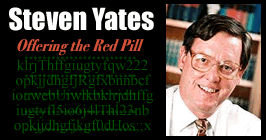


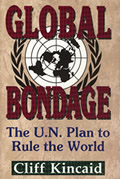


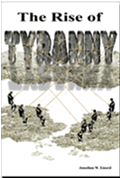
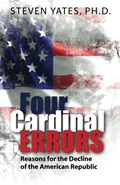




 Share
This Article
Share
This Article